What does it mean to design in the region? And how does regional designing impact a place? The Maitland Riverlink project sheds more light.
Regional design stimulates many effects within a region. It starts with contributing to new perspectives for an area, changing perceptions and creating a pathway for long-term development and transformation. Regional design is also instrumental in building local networks and relationships, helping people bond, building community, uniting stakeholders and creating favourable circumstances for collaborations.
In Maitland, NSW, a new public project recently created a stir for its unique form and impact on community and commerce. Maitland Riverlink– a building designed by CHROFI with McGregor Coxall– has been lauded for its ability to revitalise the region’s central business precinct and bring in tourists and visitors to the town.

Photo by Simon Wood
The building creates a strong architectural link and lends a contemporary identity to the town. It’s no wonder the project bagged gold at the INDE.Awards in The Building category presented by CULT. We explore how the public project acts as a catalyst for change in Maitland.
“As a practice, we have always been focused on high impact public projects that resonate with the local culture and community,” says CHROFI Director, Tai Ropiha. “We are thrilled that the building has been well received and is changing how the Maitland community engage with the river.”

Photo by Brett Boardman
The Maitland Riverlink building forms a contemporary sculptural gateway arch, creating a link between the town’s main street and the Hunter River. The town centre had originally turned its back to the river creating a disconnect from its main commercial and community activities. CHROFI identified an opportunity to reframe the dynamic, working closely with McGregor Coxall and the Maitland City Council to find buildings that could be purchased and redeveloped in the area. With the Riverlink building, the design team have been able to revitalise a 270-metre-long retail and business precinct in the city centre.
“The project is a response to the ongoing cultural, planning and economic impacts of periodic flooding of the Hunter River. The building aims to reframe the relationship to the Hunter River – from threat to a community asset. It brings new value for the regional centre of Maitland, both in terms of its identity and its assets,” adds Ropiha.

Photo by Clinton Weaver
At the local Riverlights festival, Ropiha recalls being thrilled at the sight of how the new building is encouraging a re-occupation of the riverfront en masse. From a design perspective, the architect feels that small-town local architecture should be supported. He adds, “The key to its success is the way a project identifies the special and memorable qualities of the place, using these to imagine a totally unique response that still resonates with the local culture and community, celebrating the particularities of the locality.”
In fact, it was this grounding in Maitland’s culture and sense of community that quickly swept aside the initial mistrust that many of the townspeople felt. The architects worked around a flexible, communally-oriented program and chose materials that made this sense of ownership possible. “For our practice it was proof of concept that the approach we took to the TKTS Ticket Booth in the middle of Times Square can be equally effective in a small town in regional NSW – to look beyond a given brief for unlocked meaning and value, often never even considered by the client, as was the case here. Something from nothing.”

Photo by Brett Boardman
Today the building acts as a public living room for the community. It reactivates an unused part of town, drawing locals back to the river, an essential part of Maitland’s heritage. Tourism is flourishing too, boosting business and commerce in the region. The Maitland Riverlink project sets the bar high, showcasing that through investment in community infrastructure, there is potential to enrich and rejuvenate regional towns and cities in Australia.
INDESIGN is on instagram
Follow @indesignlive
A searchable and comprehensive guide for specifying leading products and their suppliers
Keep up to date with the latest and greatest from our industry BFF's!
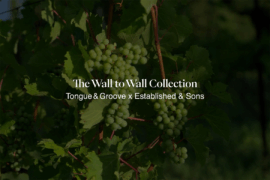
London-based design duo Raw Edges have joined forces with Established & Sons and Tongue & Groove to introduce Wall to Wall – a hand-stained, “living collection” that transforms parquet flooring into a canvas of colour, pattern, and possibility.
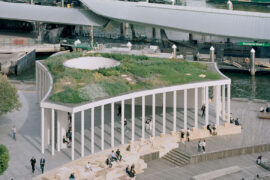
Pier Pavilion by Besley & Spresser provides a refreshing, architecturally thoughtful and versatile public space by the water at Barangaroo.
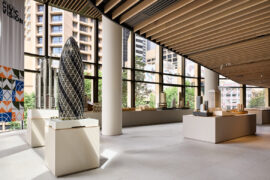
Civic Vision, a major exhibition showcasing the global work of Foster + Partners, has officially opened in Sydney.
The internet never sleeps! Here's the stuff you might have missed
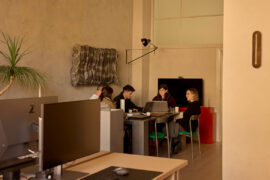
Founded by Ana Ćalić McLean and Josh McLean, In Addition is a design studio creating thoughtful, client-focused architecture and interiors.
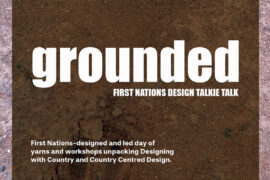
Several design groups are coming together on 29th October, 2025 for ‘grounded,’ a day of talks and workshops on Country-centred design.
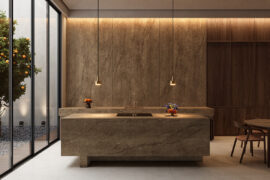
Cosentino introduces Éclos®, a new mineral surface brand featuring zero crystalline silica, high recycled content and Inlayr® technology that brings 3D layered realism to design.

Recognised as a winner at the INDE.Awards 2025, Barton Taylor has received The Photographer – Residential accolade. His photographic work on Cake House captures the soul of a coastal icon reimagined, blending light, texture and atmosphere into a compelling visual narrative.